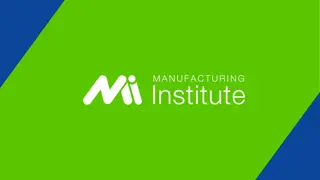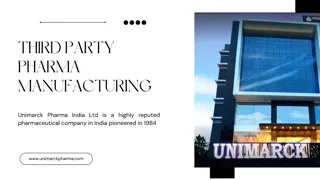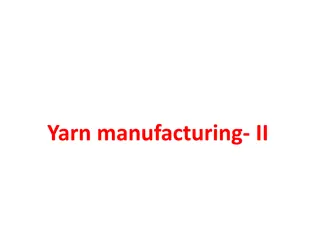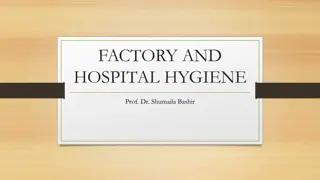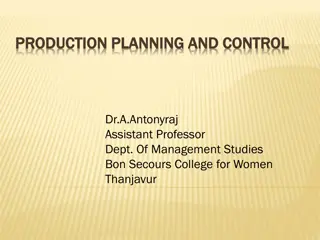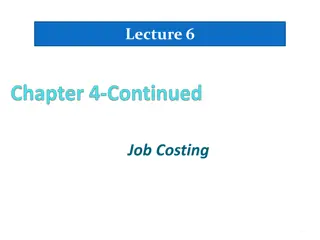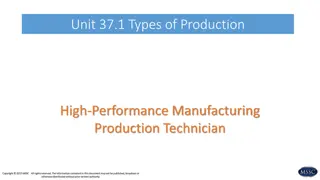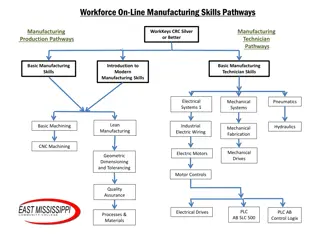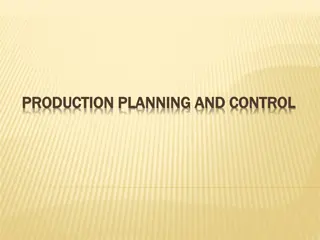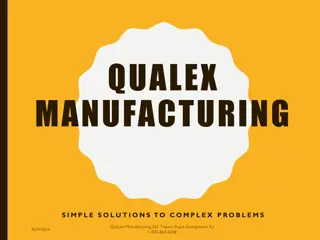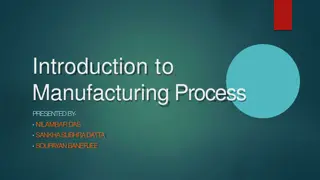Understanding Process Planning in Manufacturing
Determining the most appropriate manufacturing processes and their sequence is crucial for economical and competitive production. Process planning involves converting raw materials into finished products efficiently within design specifications. It requires input such as design data, raw material data, and quality requirements, leading to outputs like process plan sheets and operation sheets. The functions of process planning include determining manufacturing processes, operation sequences, and required equipment. Traditionally, manufacturing engineers with expertise in factory processes develop logical processing steps based on engineering drawings, delegating specific details to specialists where needed.
- Process Planning
- Manufacturing Processes
- Manufacturing Engineers
- Production Efficiency
- Design Specifications
Download Presentation

Please find below an Image/Link to download the presentation.
The content on the website is provided AS IS for your information and personal use only. It may not be sold, licensed, or shared on other websites without obtaining consent from the author. Download presentation by click this link. If you encounter any issues during the download, it is possible that the publisher has removed the file from their server.
E N D
Presentation Transcript
Determining the most appropriate manufacturing processes and the sequence in which they should be performed to produce a given part or product specified by designed Engineering It can also be defined as The systematic determination of the processes by which a product is to be manufactured economically & competitively .
The system or a process responsible for the conversion of raw material in to finished product by the most economical way within the limit of design specifications. The process parameters which is used to convert the part into the final product. Process planning is the intermediate stage between DESIGNING & MANUFACTURING of the product.
In general, the inputs to Process Planning are: Design data Raw material data Facilities data (machining data, tooling data, fixture data etc) Quality requirements data Production type data The output of process planning is the process plan: Process Plan Sheet Process Sheet Operation Sheet Planning Sheet Route Sheet Route Plan Part Program
Process Planning has the following important functions: To determine the basic manufacturing process. To determine the sequence of operations. To determine the equipment's and tooling required.
Tradionally, Process Planning is done by manufacturing engineers who are familiar with the particular processes in the factory and are able to read engineering drawings. Based on their Knowledge, skill and experience, they develop the processing steps in the most logical sequence required to make each part. Some details are often delegated to specialists, such as tools designers.
Sequence of operations to be performed Selecting the proper machines Selecting the proper tools Jigs & fixtures Material to be used Specifying the inspection stages Details like speed, feed, depth of cut, etc.
The following information is needed to develop a process plan. Knowledge of Various manufacturing processes. Engineering drawing of the component. Knowledge of various tooling and fixtures. Relative costs of various processes, tooling and raw materials. Resources available in the factory. Ability to do computations on machining time and cost. Knowledge to use reference books, such as machinability data handbook.
Part Print Analysis Make or buy decision To Select Basic Manufacturing Process To Determine the Sequence of Operation Combine the Operations Selection of Machine Tools and Equipment Inspection Miscellaneous Functions Preparation of Operation
Production Methods Size and Type of raw material Process Capability Quantity to be manufactured Delivery dates of the products Surface finish and accuracy required
The cost of processing can be reduced by eliminating unnecessary operations. This can be achieved in number of ways and are accomplished through proper planning. Operations can be performed in two ways: 1. By Simulation 2. By Integration
Simulation involves those combinations where two or more elements of an operation, or two or more operations are performed at the same time. Example:series of hole to be drilled simultaneously using a multiple spindle drill press. Cuter are specially designed.
Where several individual elements of an operation or group of operations are combined in succession but not simultaneously. Example: Taping is done after drilling hole on the same set up by just changing the tool.
Improved accuracy Reduced labor cost Reduced plant fixed cost Less tooling required Less handling required Fewer setups Smaller in process inventory Less scrap Fewer inspection points required
Maintaining tool accuracy Possible higher tool costs Maintaining dimensions for several baselines More costly setups Sometimes scrap is increased Compromises on operational speed Chip disposal
Quality related in-process inspection is an essential part of quality control in manufacturing. It includes measuring, examining or testing one or more characteristics of a product or process. Inspection includes separation of defective parts from the non-defective parts.
FLOOR CENTRALIZED Special cell located in the industry Done at work station itself
Quality inspection serves three main purposes: Identification of the problem. Preventing its occurrence. Elimination of the problem. Type of production system. Type of layout. Type of machine used.
To distinguish good lots from bad lots. To distinguish good pieces from bad pieces. To determine if the process is changing. To rate quality of product. To rate accuracy of inspectors. To measure precision of instruments. To secure products design information.
Inspection of incoming material. Inspection during the manufacturing process. Inspection of Production processes. Inspection of finished goods when it is completely manufactured. Inspection of the product before delivery, if material is stored from long time.



